AIR FETE 2000 - RAF Mildenhall / UK
Update: 2020/04/05 by Robert Kysela / CHK6
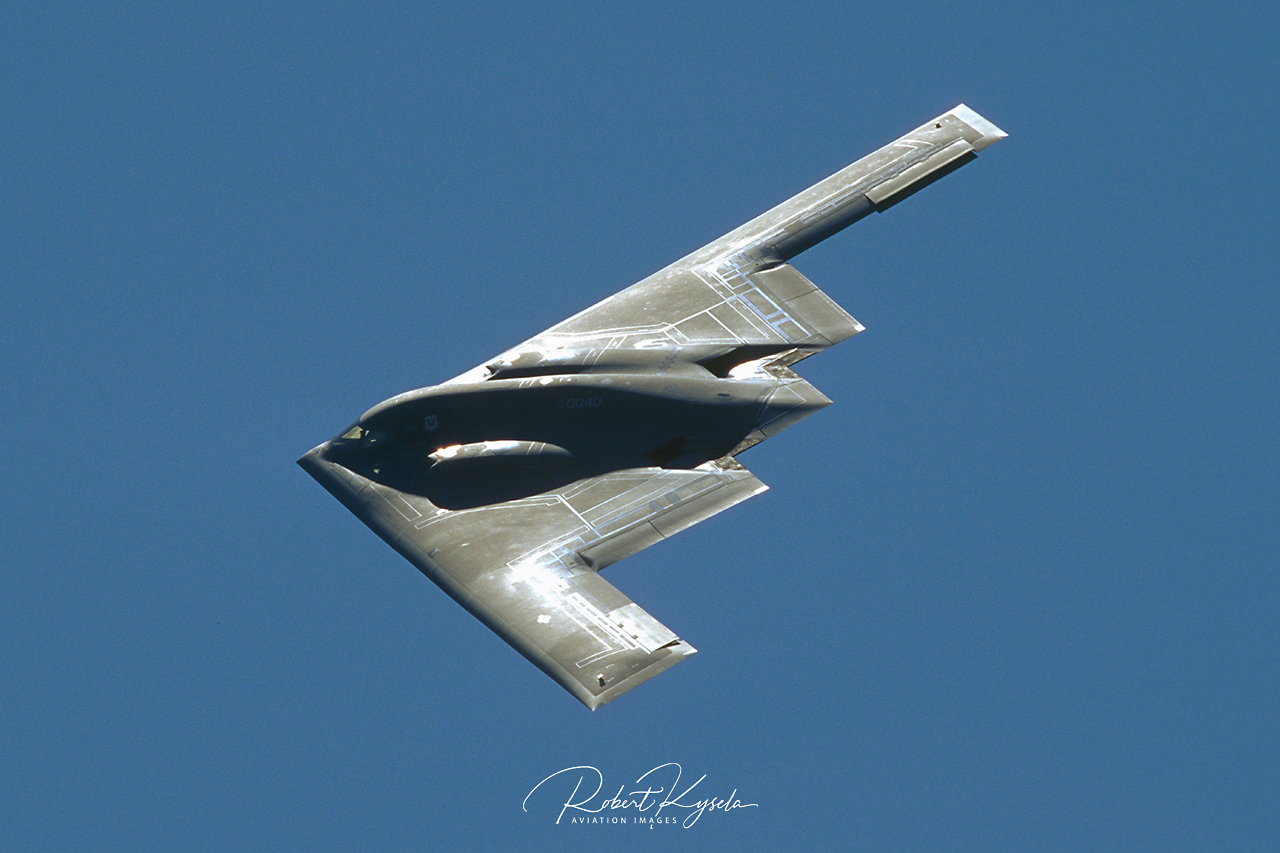
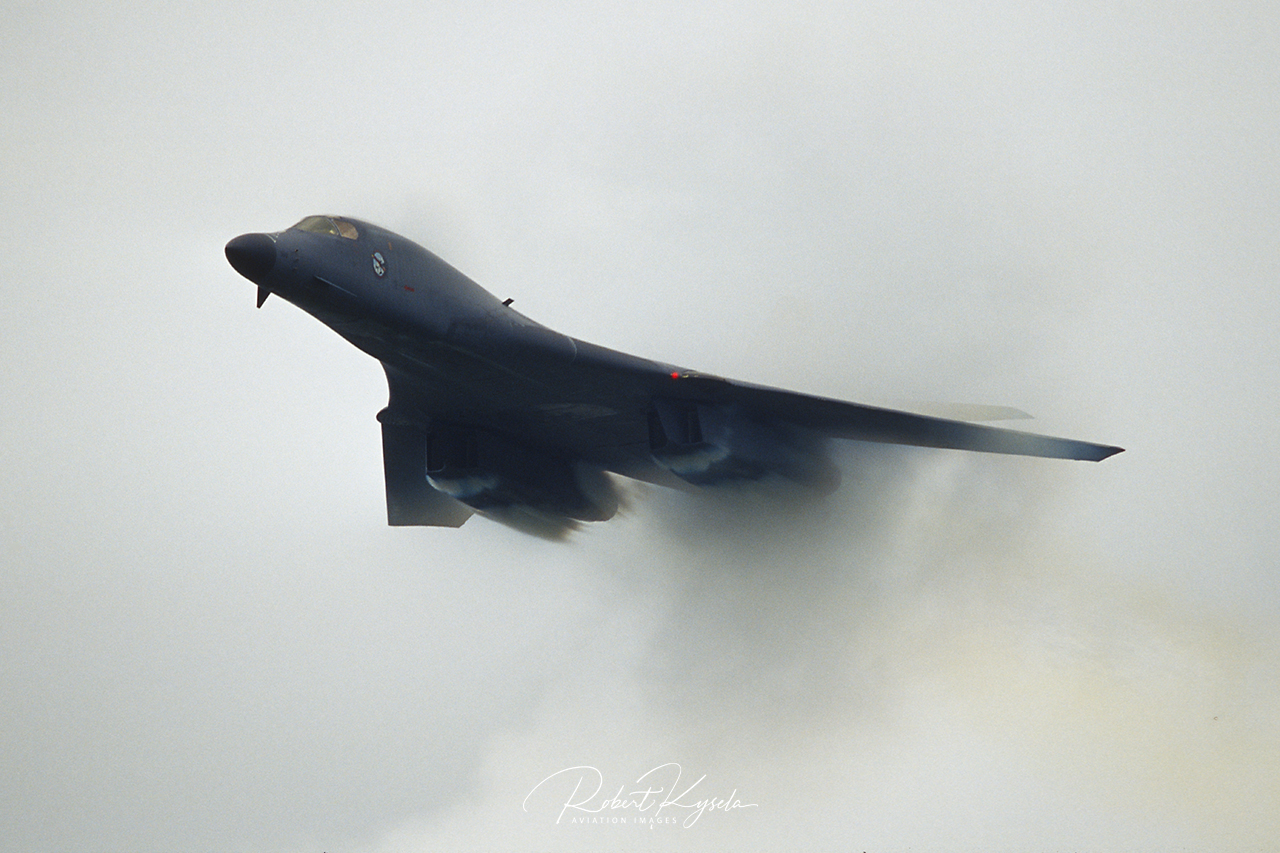
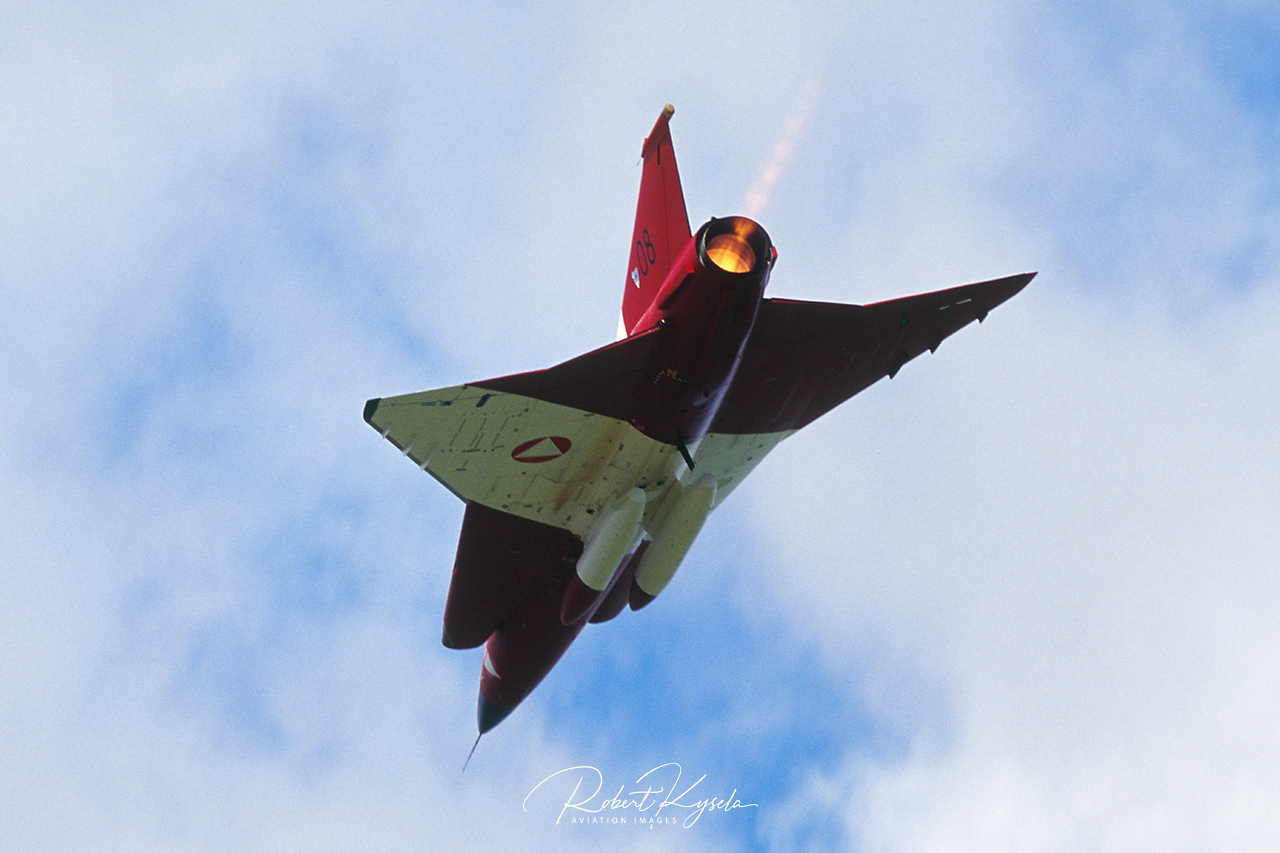
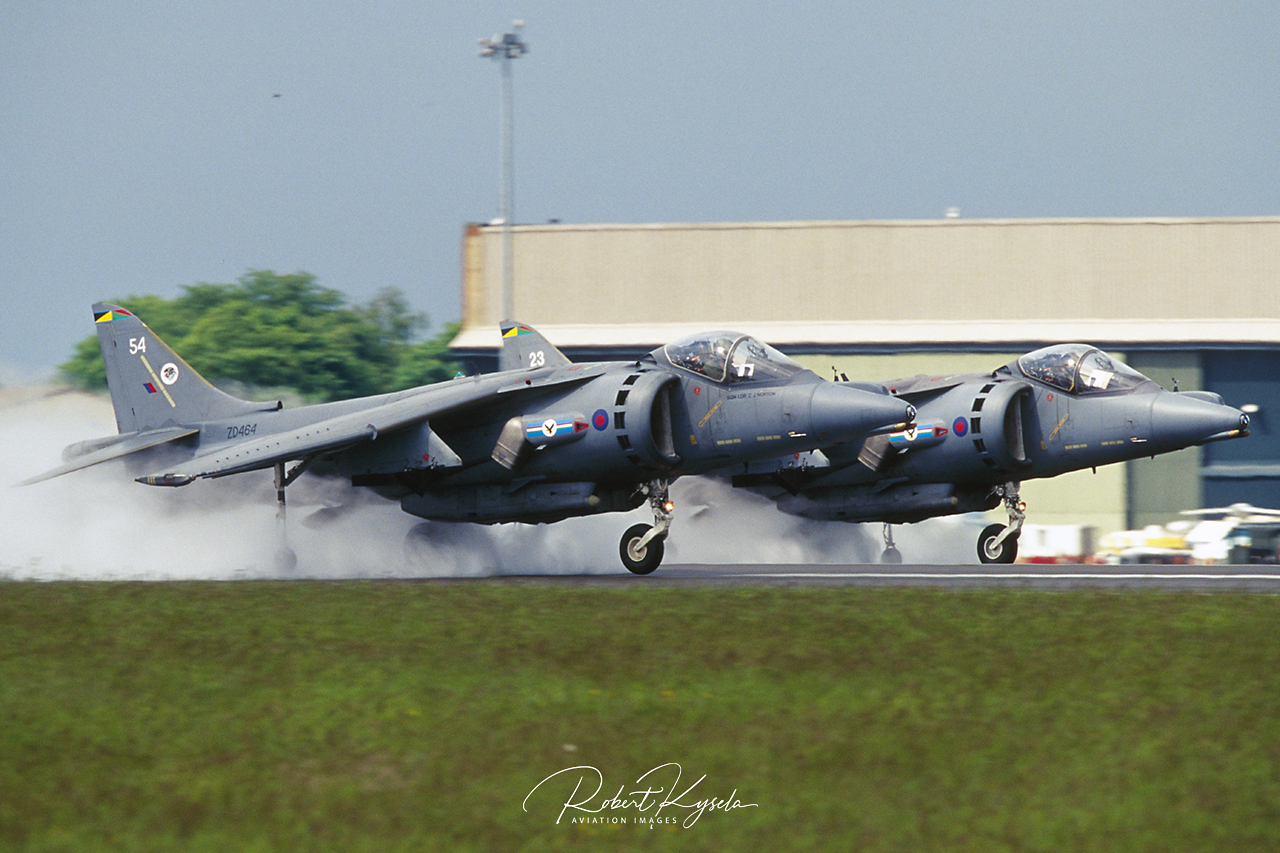
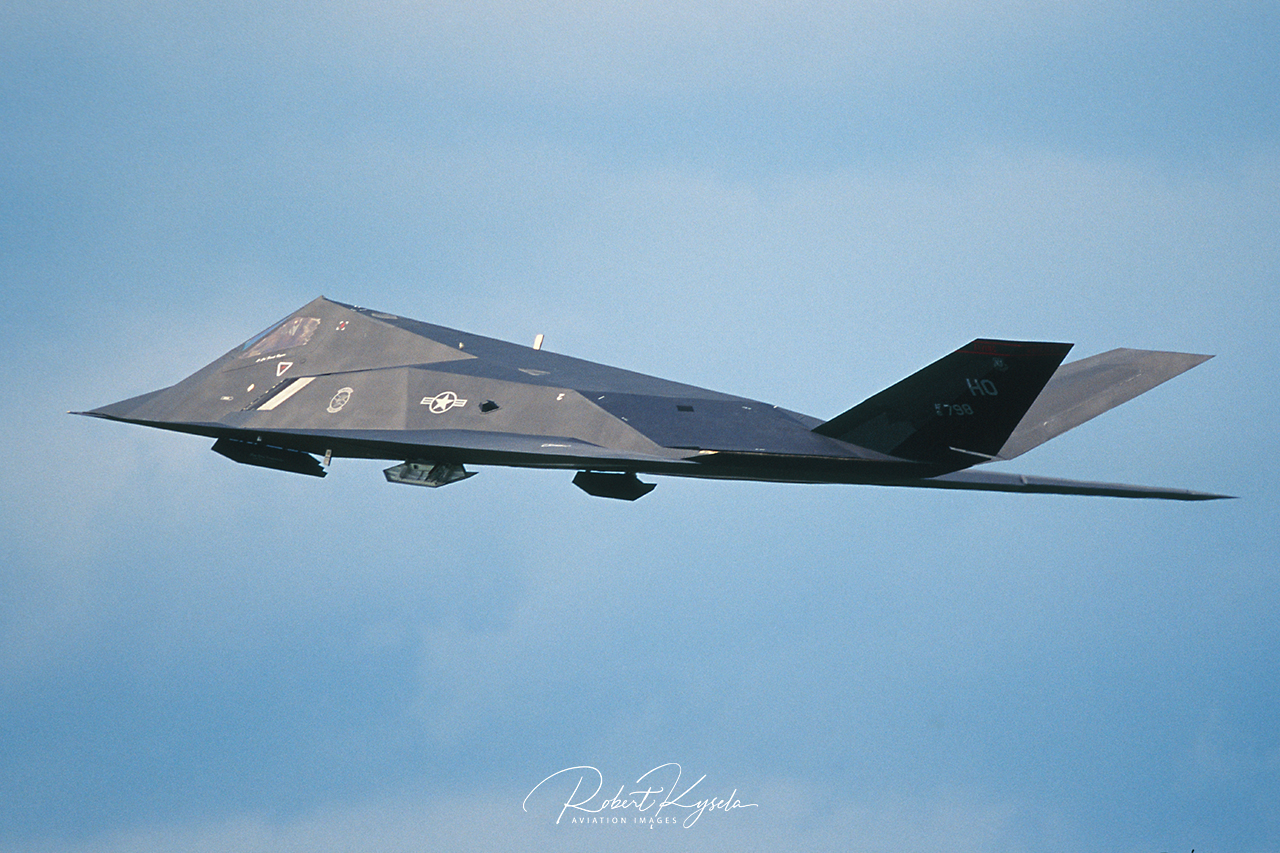
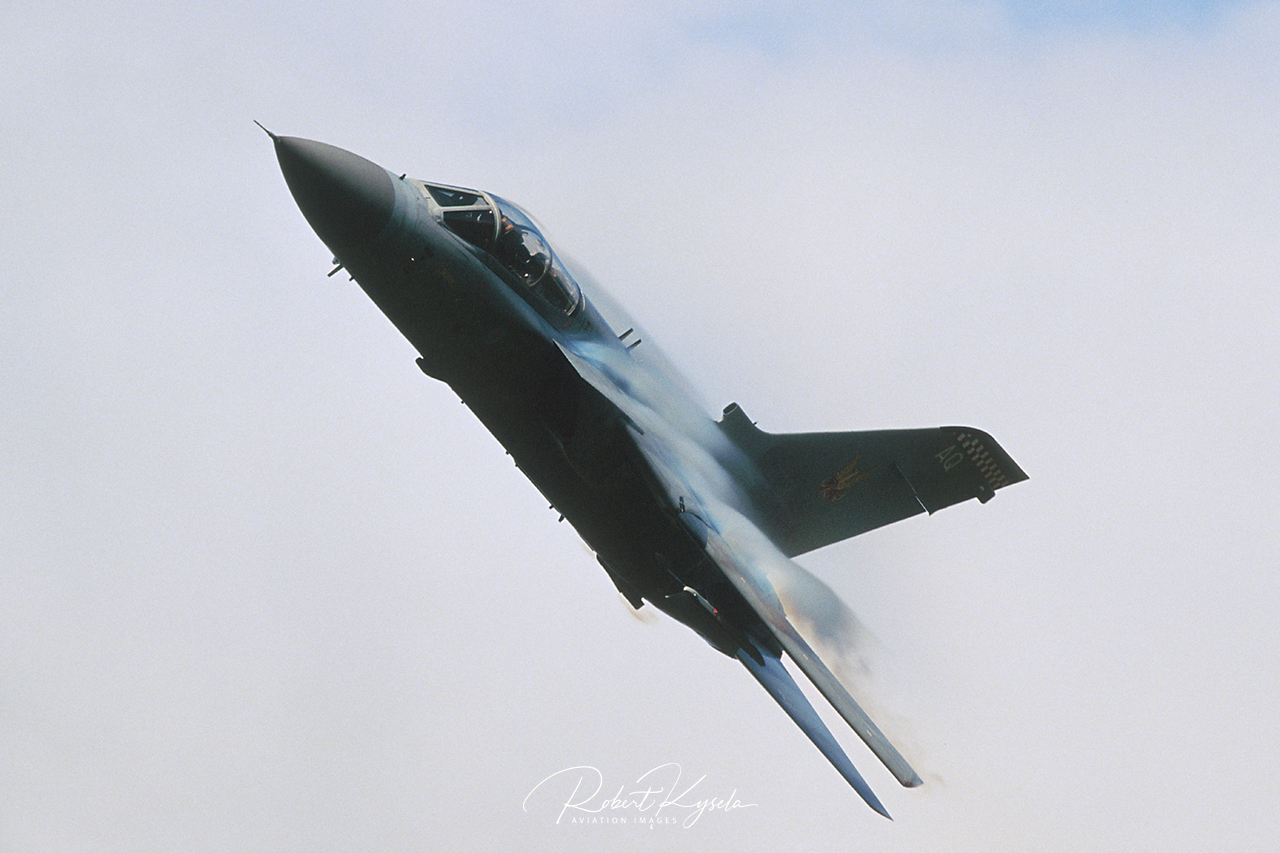
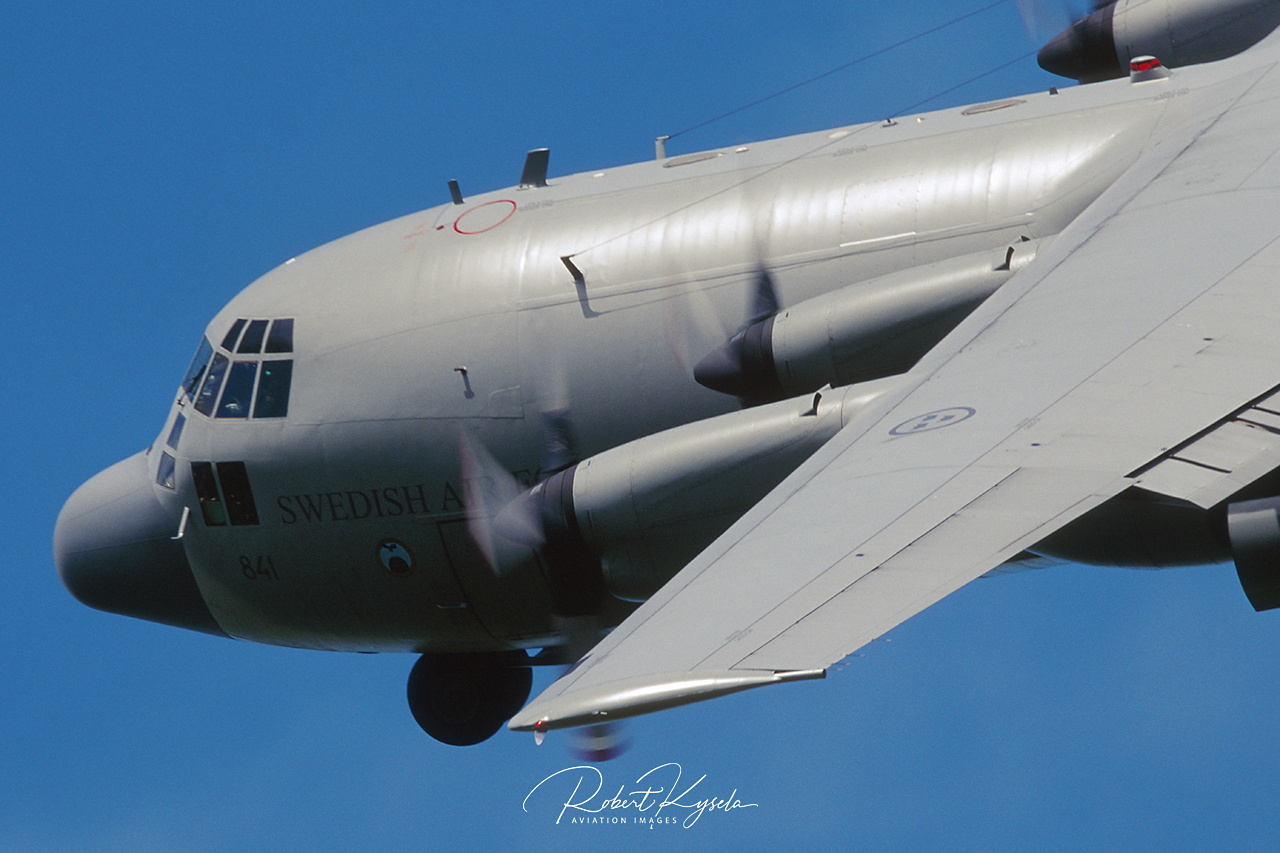
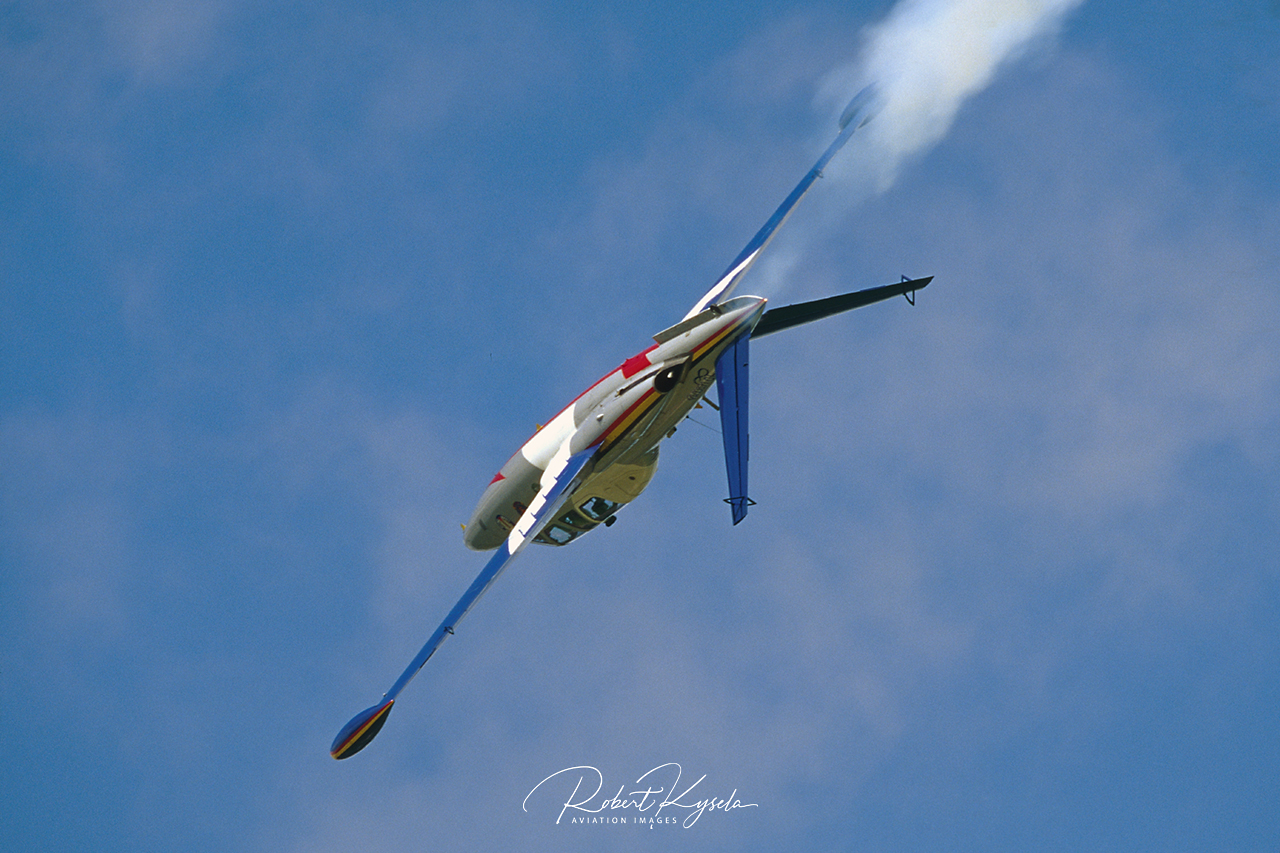
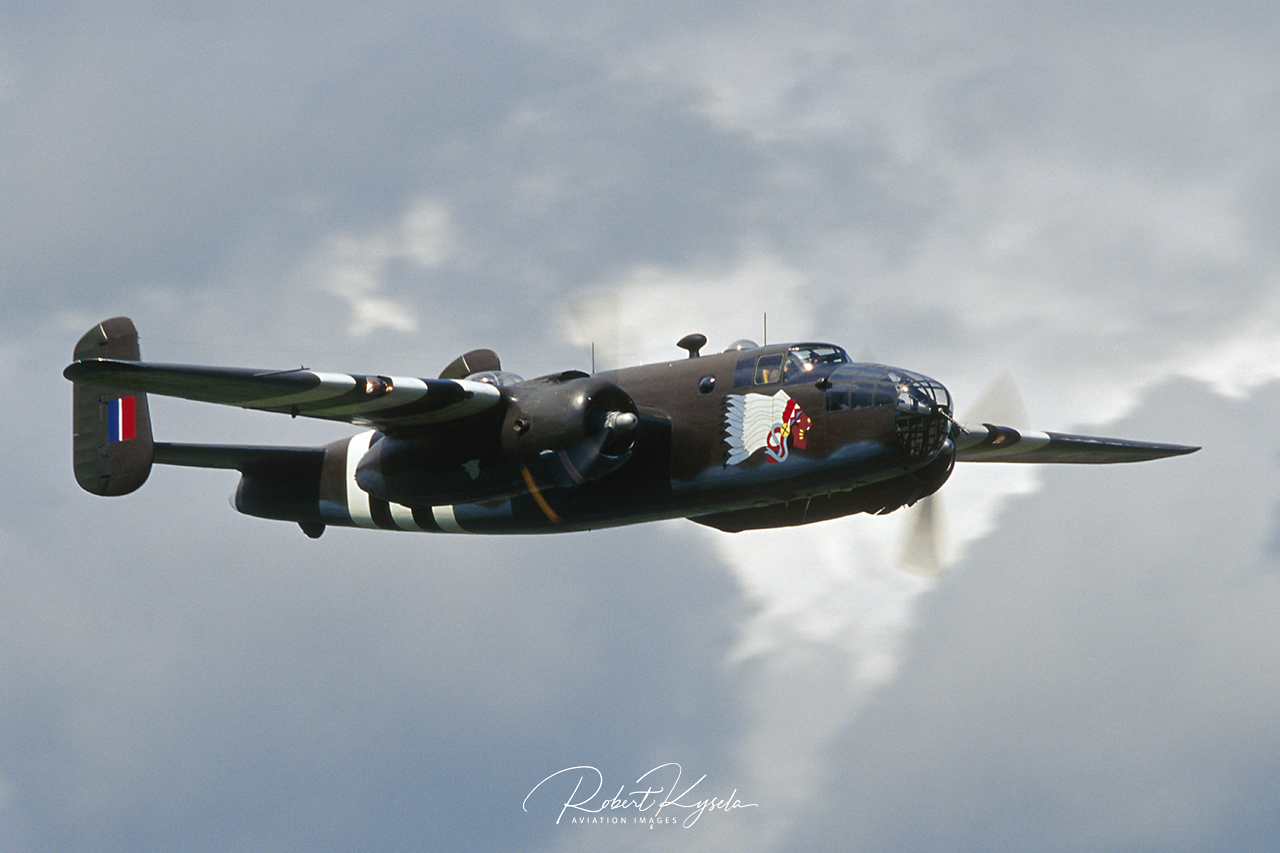
Sun, Rain, Wind and hot Jets could have been the motto for the 2000 USAFE show in Mildenhall. The bitterly cold wind and frequent downpours made the weather far from comfortable, but despite the conditions a remarkable 120,000 spectators braved the elements for what turned out to be an incredible air display. The ultimate highlight of the show was the demonstration of the Northrop B-2A ”SPIRIT”. As a sort of contrast, one could also witness the Boeing B-52H ”STRATOFORTRESS” display, and the absolutely breathtaking Boeing B-1B ”LANCER”. You will hardly ever find two aircraft embodying such different airplane concepts and it was thanks to the AIR FETE organizer and the 100th Air Refueling Wing that all three aircraft were able to participate in this marvelous flying display. The exclusion of the Boeing F-15 EAGLE from the air was desperately disappointing. Although stationed at nearby Lakenheath (48th TFW), the USAFE does not have an officially commissioned display pilot in Europe, so the crowd had to settle for the two Eagles in the static. Apart from that, one could see almost every type of aircraft in the USAF armory and with the exception of the completely missing Russian fighters the international attendance was not bad at all.
For the British empire, the victory in the battle of Britain was the first success after a long row of defeats.
R. Kysela
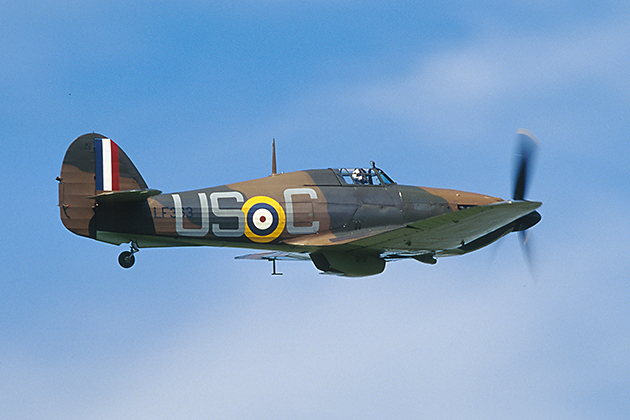
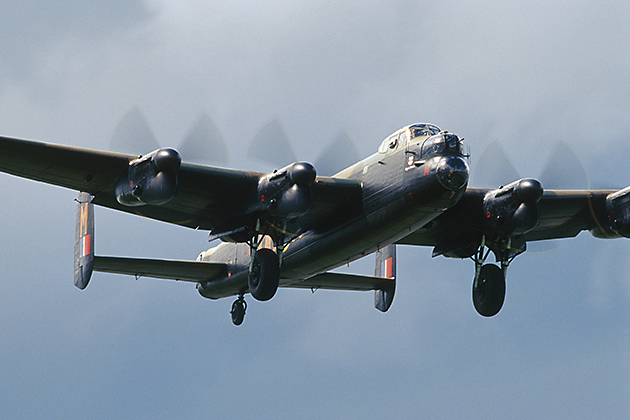
60 years ago, to be precise, on July 10th, 1940, as a preliminary stage for the planned invasion of the UK, the German Luftwaffe started their attacks on Great Britain. The continuing air raids, the fights over the Channel, the bombardment of London and other major cities went down in history as the ”Battle of Britain”. Planning mistakes in advance of the air raids, wrong estimation of the own performance and the performance of the enemy on the part of Luftwaffe command under the lead of Reichsmarschall Goering, and finally the iron will of the British people let the so far undefeated German Luftwaffe suffer its first great defeat. For the British empire, the victory in the battle of Britain was the first success after a long row of defeats.
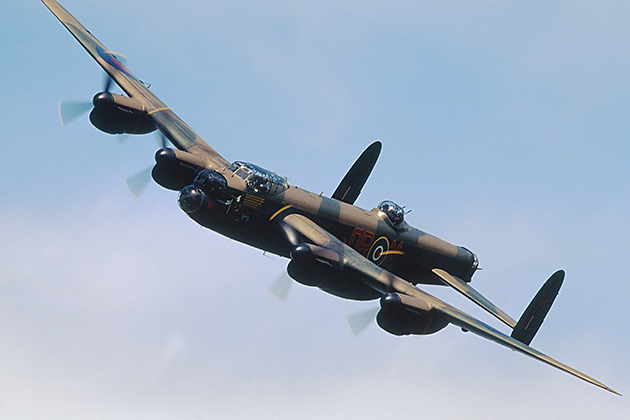
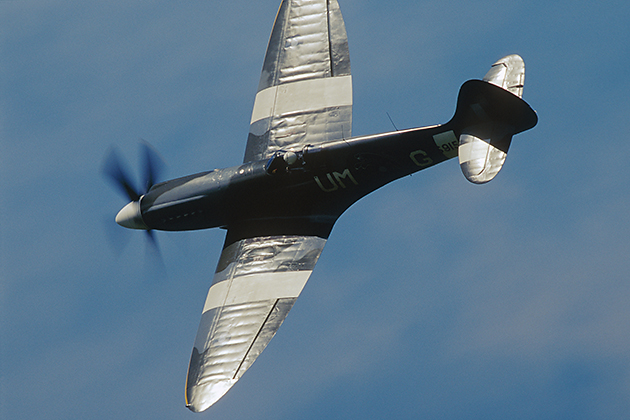
Beautiful to watch is always the display of the Battle of Britain Memorial Flight. This unique formation officially belongs to the Royal Air Force, and is also flown by active duty RAF pilots. All three aircraft presented themselves with a new painting, but also with a new, much more interesting display this year. Especially the Griffon powered Supermarine SPITFIRE Mk. XIX (this aircraft is not absolutely authentic – at the time of the Battle of Britain all Spitfires had been equipped with Rolls Royce Merlin engines, the newest Spit around the end of this battle was the Vb!) performed a breathtaking display – but also the Hawker HURRICANE did a superb solo display. Unfortunately, on the second day, the weather was really bad at the time when the three-ship formation was flying, but at least the day before had allowed some fantastic pictures with dark black thunderstorm clouds in the background.
One of the weakest points of the B-17 is its engines and is often the reason for it not being able to fly at an air show.
R. Kysela
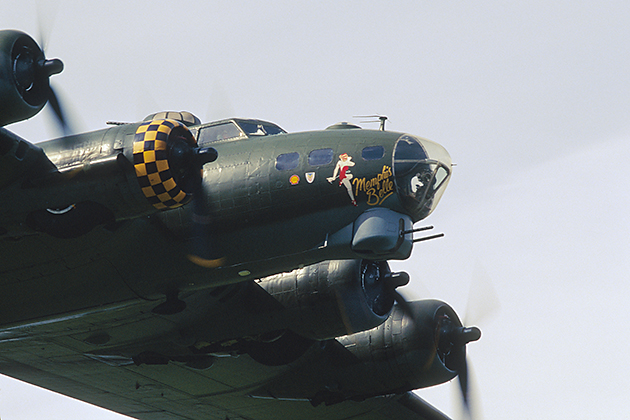
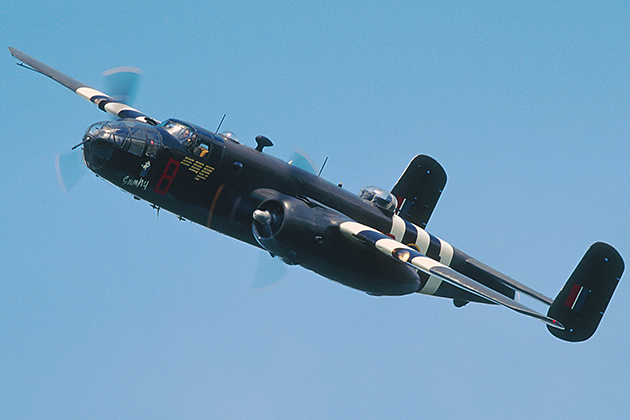
Not directly as a homage to the Battle of Britain, but as a reminder to WW II, were other WW II veterans flying awesome displays. Especially mentioning the display of the only air worthy British Boeing B-17G ”Sally B” which is privately owned and housed at an airfield in Duxford. One of the weakest points of the B-17 is its engines and is often the reason for it not being able to fly at an air show.
The North American B-25D ”MITCHELL” belongs to the fighter collection from Duxford, and is visually as well as technically in a perfect shape. On the second day, the enthusiasts were delighted to see a very rare display of a Battle of Britain Memorial Flight Douglas C- 47 ”DAKOTA” in the RAF colors.
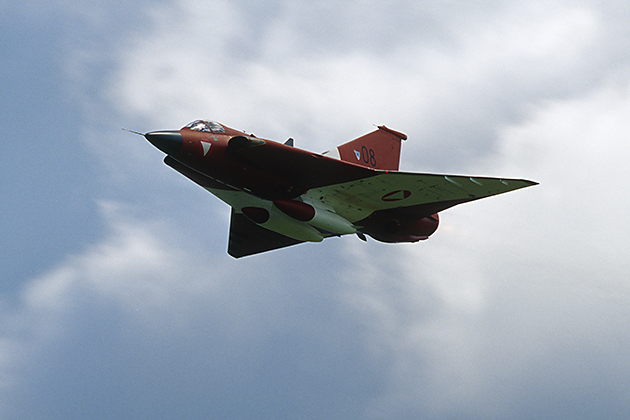
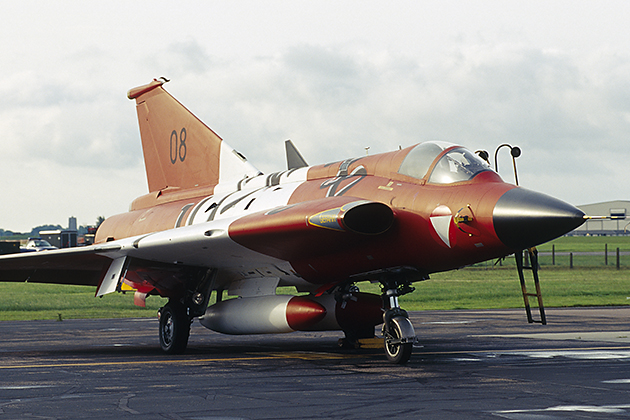
For most air show visitors, jet displays are the absolute highlights. Modern fighter jets provide an unbelievable performance that delights the aviation enthusiast. An air show display contains elements such as speeds up to Mach 0,95, high-g-turns, climb rates up to 1000 ft/sec, and red-hot afterburners, not to forget the unmatchable sound. It is hard to recall that these high-tech airplanes were not built for peaceful purposes. A positive trend, especially for photographers is the increasing number of aircraft that are painted in special colors, a development that was not overlooked at Mildenhall.
The Austrian Draken was definitely one of the top stars of the AIR FETE 2000. This season, Capt. Werner Kriebitz is performing the displays with this wonderfully painted jet. The ”old Swede” is probably not what we would call state-of-the art, but its fascinating double delta configuration makes it even more attractive than many newer aircraft. The Austrian Draken`s are usually equipped with two 30 mm Aden guns, AIM-9 Sidewinder air to air missiles, and two 510 l external tanks. A second aircraft was shown in the static.
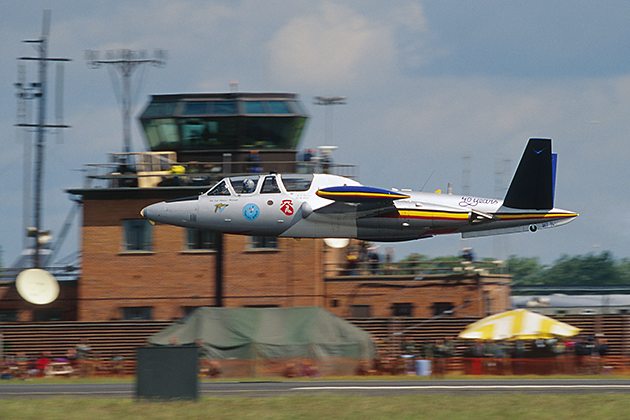
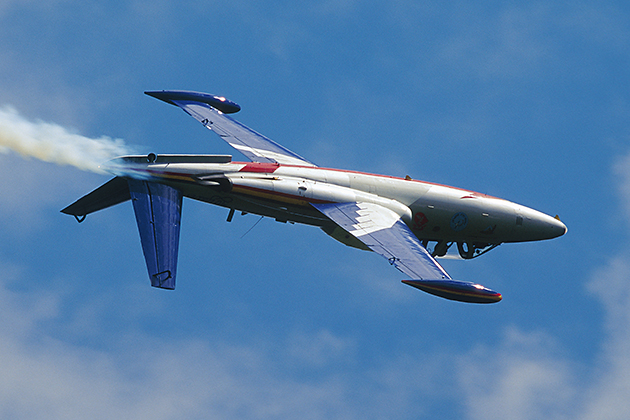
Also not a very modern jet is this small trainer, the French Fouga Magister. Developed in the early 50ies, it is still operative in the Belgian Air Force (for exactly 40 years now !). For many years, the Magister was the basic trainer for several European air forces, it was even used in Germany during the 60ies. The display aircraft comes from Beauvechain, and is wonderfully painted. A second, bright red Magister was displayed in the static. We sincerely hope that this milestone in the development of jet trainers, will be presented at air shows for many more years. Unfortunately, its days in the Belgian Air Force will soon be gone, we hope that perhaps a private organization could avoid its deportation to a museum.
The Belgian pilot impressively demonstrated the VIPER´s performance.
R. Kysela
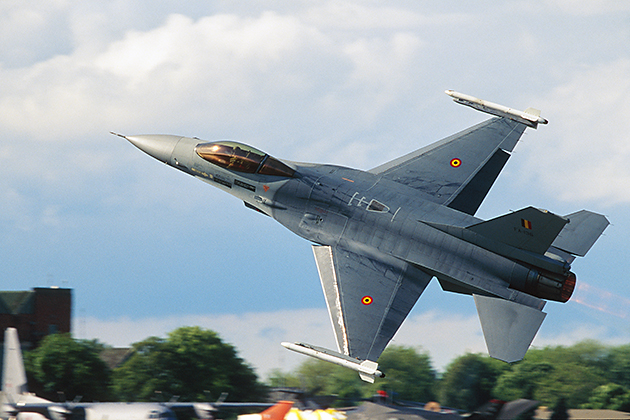
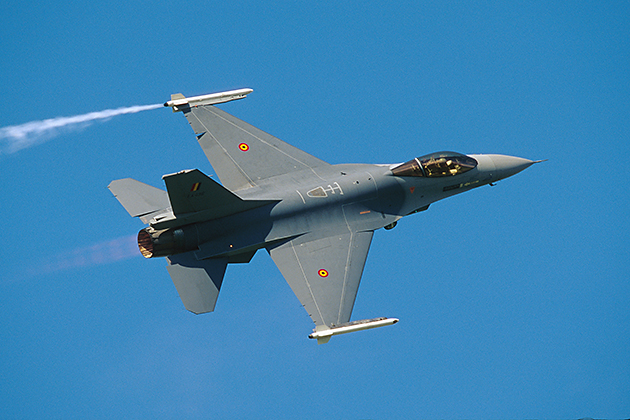
Compared to the Fouga, the Lockheed Martin F-16MLU “VIPER“ – also from Belgium – presented a totally different display. The Belgian pilot impressively demonstrated the VIPER´s performance. The unmistakable, futuristic design of this Lockheed – built fighter (originally, it was designed by General Dynamics) would hardly let one suppose that its maiden flight was 26 (!) years ago. The European F-16A operators, like Belgium, the Netherlands, Norway and Denmark are currently upgrading their Fighting Falcons (avionics, fire guidance system) in order to be fit for the new millennium, the first upgraded aircraft are already operating again. This upgrading process started in 1997, and will be finished in 2003. The MLU (Mid-Life Update) will take place in the user countries itself after having finished intense testing in the USA. In total, 343 F-16 Block 10 and 15 will undergo this MLU, and the result is actually attractive: from a pure daytime interceptor, to a real all weather / all day fighter. The cockpit area is being totally renewed, a new radar (APG 66(V)2), a new fire guidance system, and many more small changes will upgrade these aircraft to the standard of the last Block 50 Vipers, without losing the agility of the early A – version.
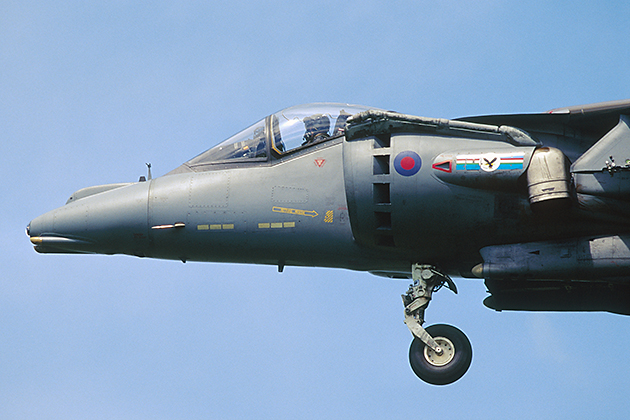
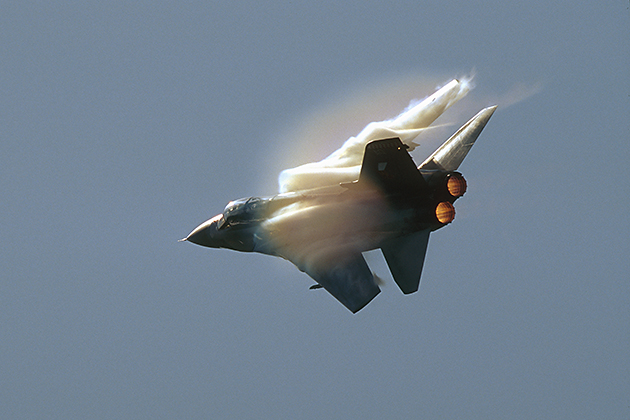
Of course, no air show would be complete without the Bae HARRIER jump jet. Almost no aircraft manages to delight the crowd more than this VTOL aircraft. The display is a real experience, especially the hover flight, the bow and the flight in a backwards direction make this display really worth seeing. Also in this case it is barely believable that the Harrier has been flying for now for 35 years. Similar to the Harrier, the PANAVIA Tornado is a must at an air show. In the UK, the display is mostly performed by the long range interceptor – version F.Mk3. There is no other aircraft producing such great separations when the air humidity is playing along. And, of course the British pilots understand how to beautifully point out the advantages of their jet.
So, the organizers were forced to improvise, they added a second GE J79 engine to the one of the Starfighter, and there it was, a McDonnell Douglas F-4F from Jagdgeschwader 72 “WESTFALEN“ of the German Luftwaffe.
R. Kysela
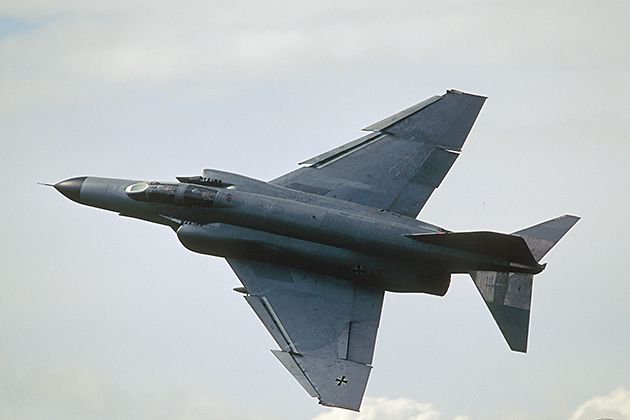
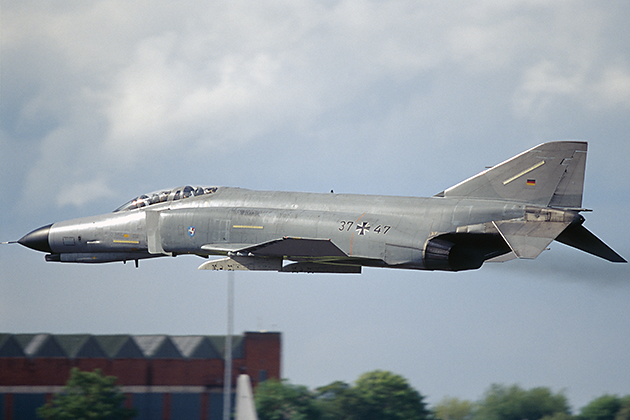
Theoretically, there was an Italian Starfighter on the list for the flying display. Unfortunately, once again we had to experience the difference between theory and practice. The Italians had canceled their participation for unknown reason. So, the organizers were forced to improvise, they added a second GE J79 engine to the one of the Starfighter, and there it was, a McDonnell Douglas F-4F PHANTOM II from Jagdgeschwader 72 “WESTFALEN“ / German Luftwaffe. What a show! Right after liftoff, the pilot sharply turned left, the display contained maneuvers with up to 7 g´s, inverted flight and a high speed pass. The outstanding skills of the German pilots as well as the great effort in maintaining the PHANTOM was clearly indicated – actually, the PHANTOM isn’t a young lady any more. But the highlight of the PHAMTOM display was a touch – and – go, when the pilot raced along the runway in just a few feet of altitude, with the burners on. It is a real pity that the JAGDGESCHWADER 72 “WESTFALEN” does not have its anniversary painting from 1996 any more. The whole aircraft was painted in blue and red colours, with a huge horse on its belly, was definitely one of the most beautiful special paintings schemes of the last years.
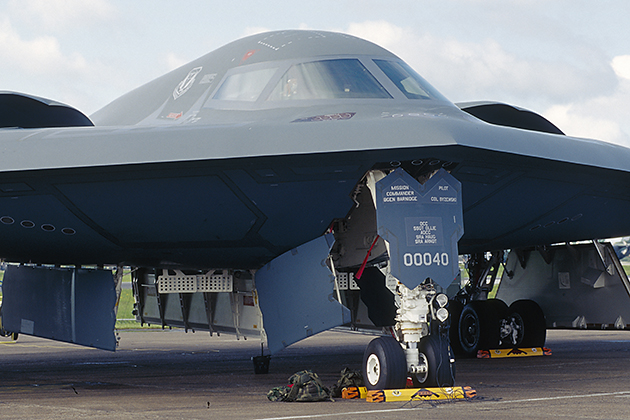
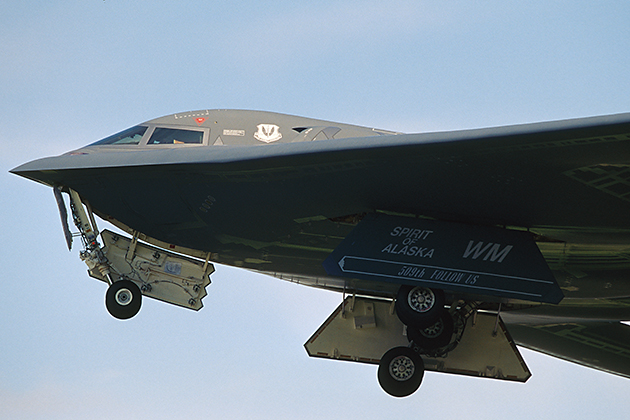
To see all the bombers of the USAF Air Combat Command (ACC) at one air show, is a rare experience, even in the ”Land of milk and honey” of air shows, the USA, but, this was actually the case for the Millennium Air Fete. The star as such was the B-2A ”SPIRIT” stealth bomber from the Whiteman AFB / Missouri, named ”Spirit of Alaska”. In total, 21 B-2A bombers were built, all of which belong to the 509th Bombardment Wing. The crew of the ”SPIRIT” consists of the pilot, and the mission commander. The second heavy USAF bomber is the Rockwell developed Boeing B-1B ”LANCER”. From its basic concept, there is a huge difference between the B-1B and the B-2A, which also leads to very different mission profiles. Originally, the B-1 was designed as a high level Mach 2 bomber, but its development was canceled by the Carter administration. It was redesigned during the Reagan presidency and put into USAF service with a revised mission profile. Actually, the elegant shape of this jet somehow plays down its actual size and performance. The LANCER manages to penetrate adverse airspace at 150 ft altitude at Mach 0,92, and precisely drops its death-promising load. Similar to the Tornado, the B-1B is equipped with a terrain following radar, which allows the four men crew to carry out the mission under all meteorological conditions, and with a good chance to return home safely. This means that the LANCER has a good chance of survival in enemy airspace.
Powered by four General Electric F 101-GE-102 with 13,92 kN of thrust each, the crew performed a breathtaking low level high speed pass.
R. Kysela
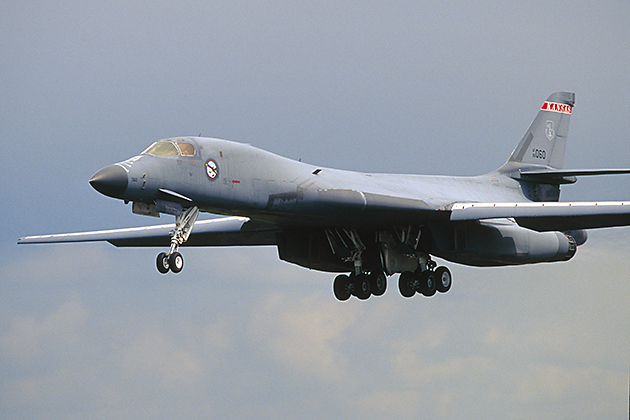
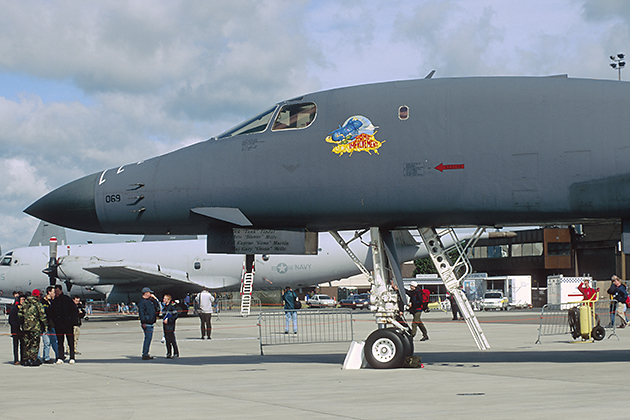
The display of the B-1B (unofficially also called BONE – B-ONE) very impressively demonstrated the enormous power and elegance of this extraordinary aircraft. Powered by four General Electric F 101-GE-102 with 13,92 kN of thrust each, the crew performed a breathtaking low level high speed pass. To strike without any advance warning, and then disappear by the quickest possible means, is part of the Lancer mission profile. In fact, it would be virtually impossible to perform a better B-1 display any where else than at Mildenhall. On the second day one could see huge areas of separation during the high speed passes, caused by the high air humidity. Of course, the four afterburners provided appropriate sound effects for such a display and made the ground tremble. ”The BONE” left a powerful impression at Mildenhall.
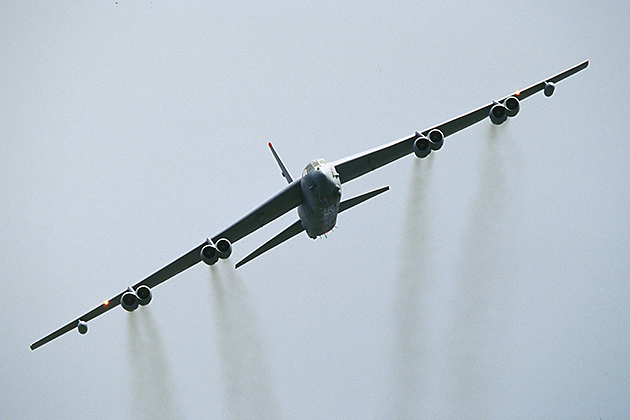
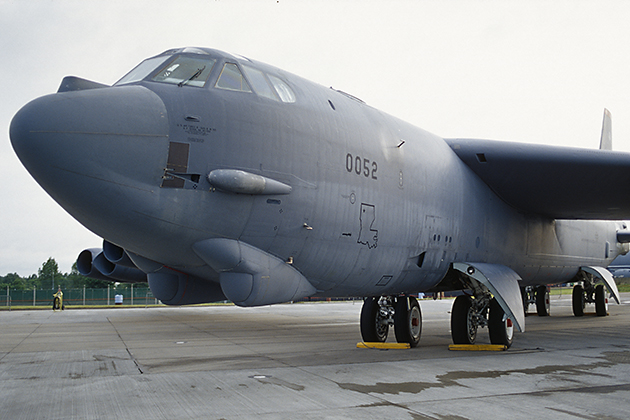
The Boeing B-52H STRATOFORTRESS is a cold war warrior that should have been replaced by the B-1A, but it continues to fly today as an American legend. On duty since 1955, the B-52 was and still is the backbone of the strategic bombing units of the USAF. 744 B-52 have been built in total, 94 are still on active duty – and according to the Pentagon intentions, they will be in use until at least 2025 ! That would mean a 70 years term of service for an aircraft that was supposed to retire long ago. Apart from there not enough money to develop a sufficient successor, the upgraded B-52 still fulfills all of its mission requirements. There is almost no aircraft that can look back on such a long career as the BUFF (Big Ugly Fat Fucker). To see it fly, is a very special experience, time and time again. After the old Pratt & Whitney J 57 engines had been replaced by the modern TF 33 Turbofans, and the JP-4 fuel by the cheaper JP-8, the BUFF has lost one of its most characteristic features, the eight smoke trails from the engines, which had always been a sort of trademark for this bomber. As you can see on the picture on the left hand side, the smoke output has been significantly reduced.
Unfortunately one F-117 was shot down by the Yugoslavian air defense which was a real shock for the US public.
R. Kysela
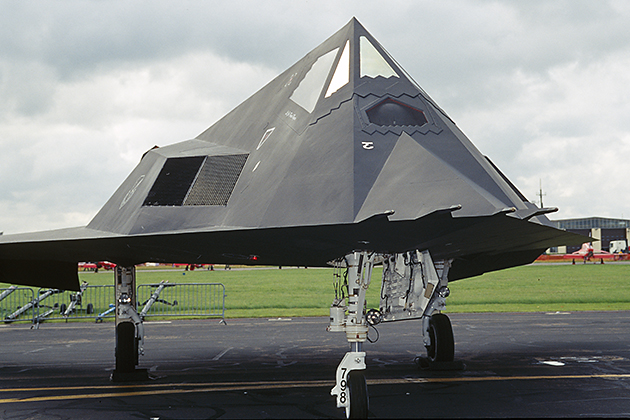
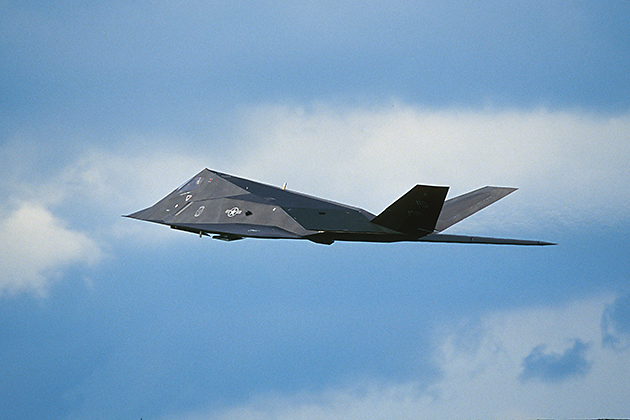
Much newer, but definitely not less interesting is the fourth US Air Force bomber. In contrast to the strategic bombers such as B-1B, B-2A and B-52H, the Lockheed Martin F-117A ”NIGHTHAWK” was developed for tactical missions. The NIGHTHAWK rose to fame during its precision strikes during the Gulf War, in particular the first attacks on Baghdad, and also in the former Yugoslavia. Unfortunately one F-117 was shot down by the Yugoslavian air defense which was a real shock for the US public. No matter from which perspective you look at the F-117A, you will always have the feeling it is a science fiction interceptor from Star Wars rather than a fighter jet from the present. Still, it has been on duty since the early 80ies. The ”Black Jet” has created a new definition for ”precision striking” with its newly developed smart weapons. The Stealth is very well known at many air shows, but never the less still holds a great fascination for the people who attend. In Mildenhall, the dramatic display was framed by dark ominous clouds that sent shivers down the spines of the spectators and only moments later opened up once more to drench the on looking crowed.
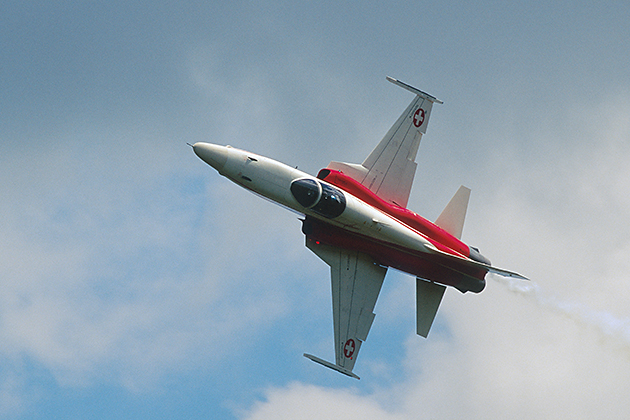
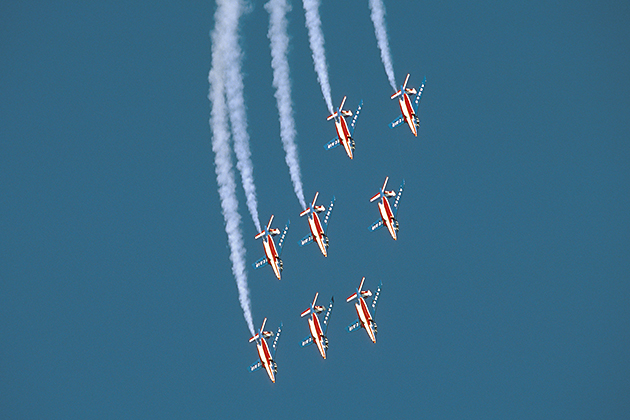
What is an air show without aerobatic teams ? The AIR FETE was no exception at all, with a mixture of high – carat, international formations giving the spectators a great overview of the spectrum of the European aerobatic teams. All the big names were there, the Swiss PATROUILLE SUISSE, French PATROUILLE de FRANCE, Italian FRECCE TRICOLORI, and of course the British RAF RED ARROWS. And one prop formation, the ROYAL JORDANIAN FALCONS with their Extra 300S acted as a ”counterweight” to all the jet formations. The quickly changing meteorological conditions, especially on Saturday, did not make life easier for the teams, but for the spectators, this was just great: a background consisting of black clouds, sunshine and smoke, with beautifully painted aircraft flying in formation in the foreground. A unique spectacle – you won’t find a better air show.
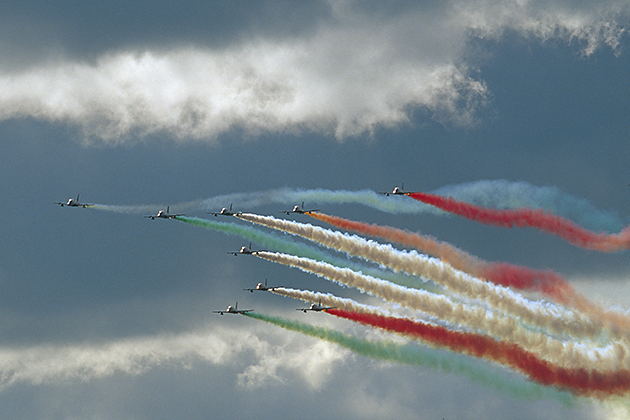
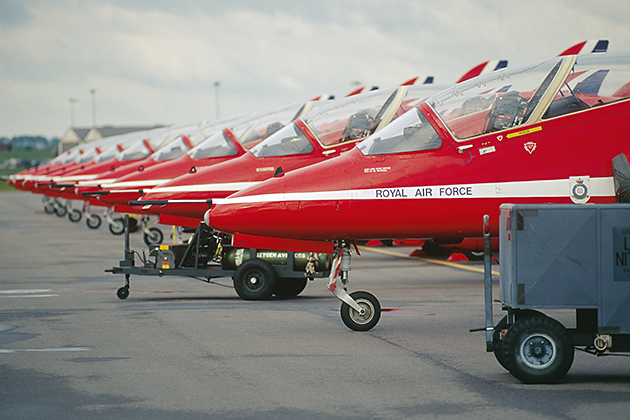
VERDICT: The Royal International Air Tattoo is definitely the biggest air show in Great Britain, but the AIR FETE, annually taking place in May, can arguably be called the finest US Military air show organized outside of the USA, and that is why Milldenhall enjoys a very special reputation within the European aviation events.
Robert Kysela / CHK6

